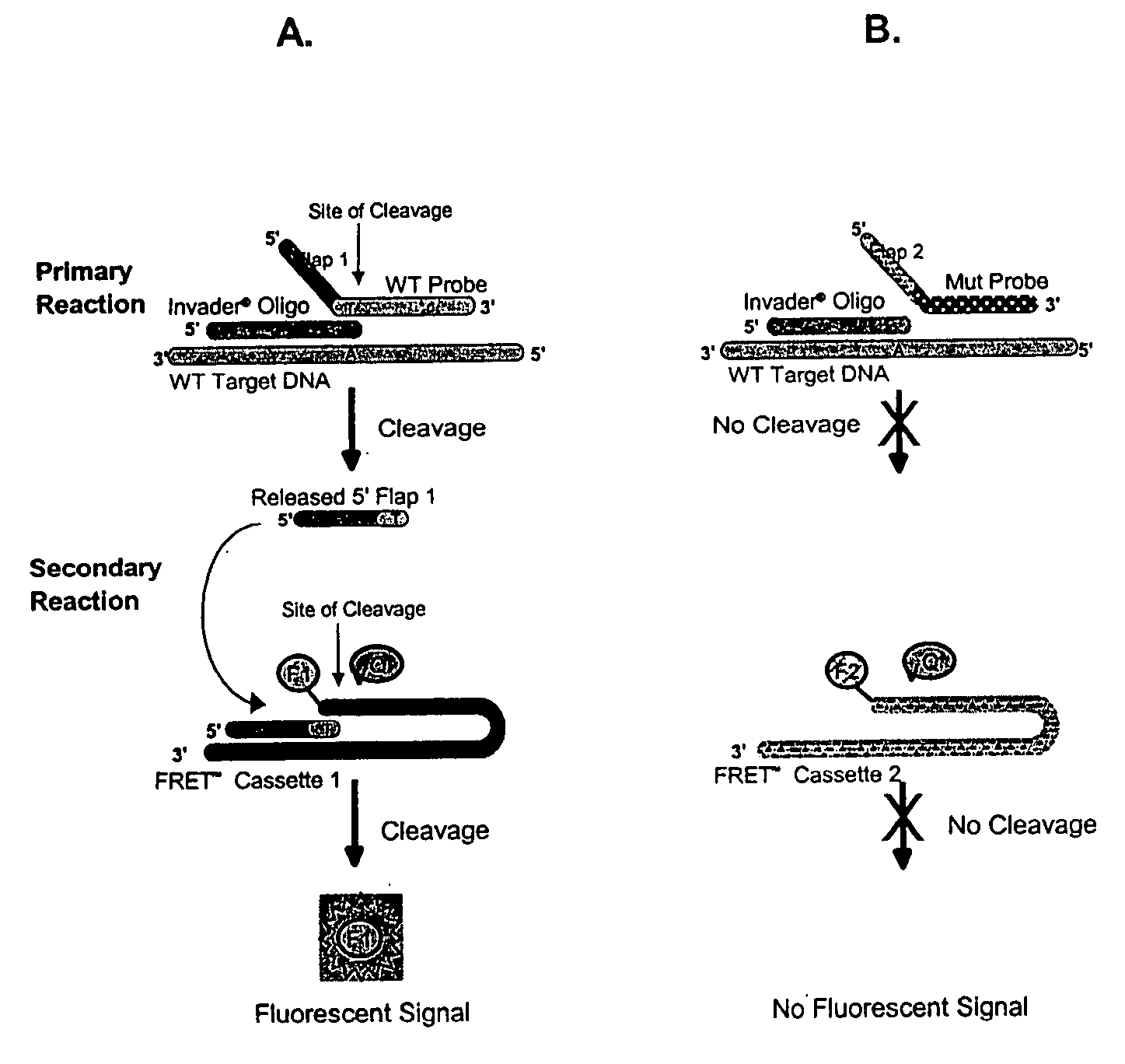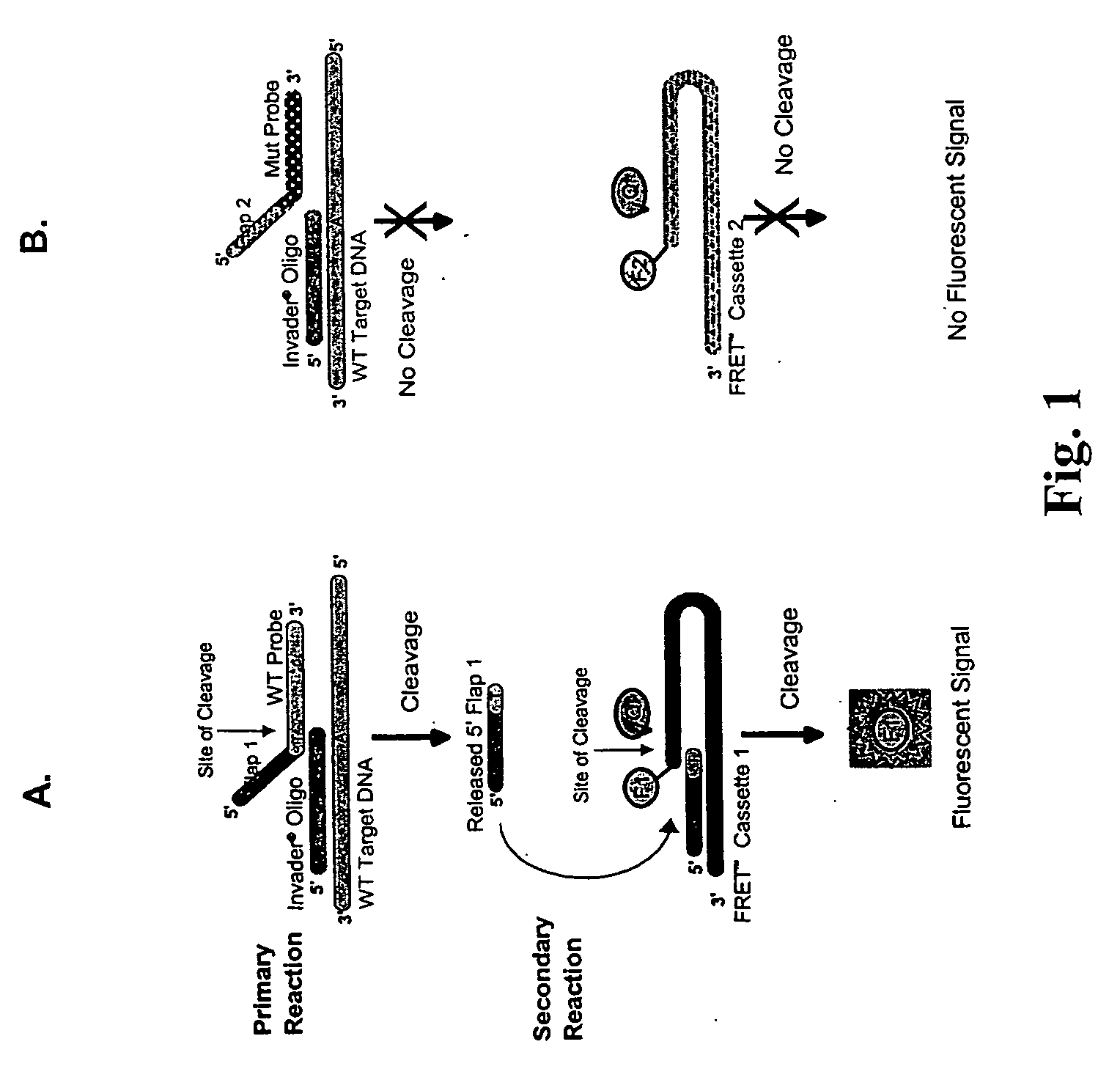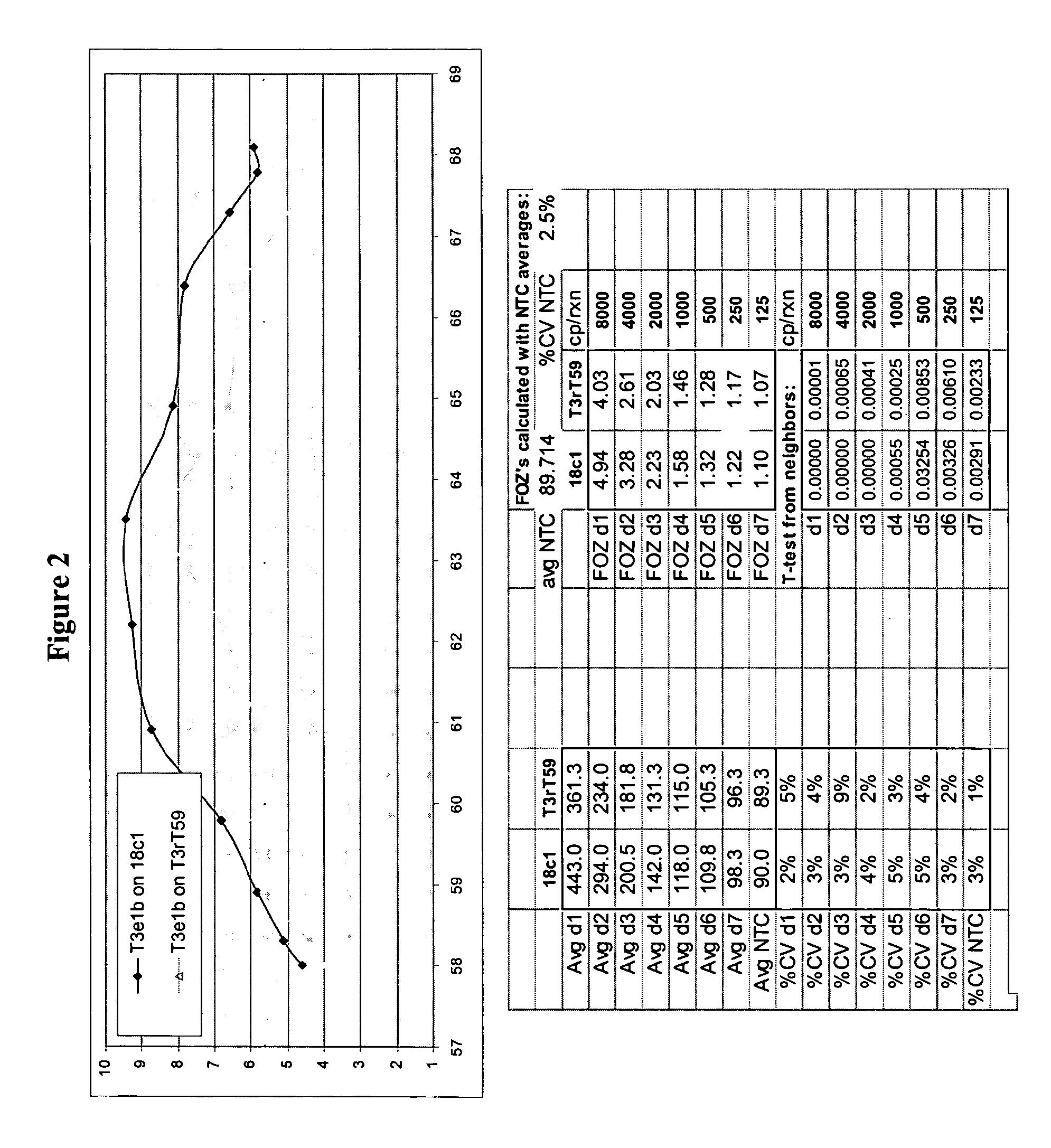Detection Of HPV
a technology of nucleic acid and detection method, applied in the field of nucleic acid detection assay, can solve the problems of methods that fail to detect a significant portion of abnormal, often precancerous, cells
- Summary
- Abstract
- Description
- Claims
- Application Information
AI Technical Summary
Benefits of technology
Problems solved by technology
Method used
Image
Examples
example 1
Design of Oligonucleotides to Detect Multiple HPV Strains
[0120]The objective of these experiments was to arrive at oligonucleotide designs suitable for use in INVADER assays comprising multiple target HPV strains. As a first step, HPV DNA sequences were obtained from Genbank and aligned using SEQ WEB GAP and PRETTY programs (Accelrys, San Diego, Calif.). Only those regions of HPV that are reported to remain intact following chromosomal integration were analyzed to permit the assays to detect both integrated and non-integrated HPV sequences. Regions of suitable sequence conservation were chosen for select groups of strains. In this example, areas within the LCR, E6, and E7 genes were found to have considerable homology between HPV 18 and 59.
[0121]Candidate probe oligonucleotides were designed by searching for stretches of sequence comprising a limited number of mismatches between the two targets in either pair. Designs were generated to several sequences on either the sense or antise...
example 2
Design of Oligonucleotides to Detect HPV 16
[0137]Candidate oligonucleotide sets having a primary probe and an INVADER oligonucleotide were designed to detect regions in both HPV 16 and HPV 31 using the procedures described in the preceding examples. Designs were directed to the E7 gene of HPV. As in Example 1, different INVADER oligonucleotide sequences were tested in combination with a single probe sequence to find a probe set with optimal performance characteristics at the desired reaction temperature (63° C.) and in terms of limit of detection (FOZ). Both temperature optimization experiments and LOD (FOZ) experiments were conducted as described above using 15 μl of a 20 fM stock solution of HPV 16 plasmid (ATCC Catalog Number: 45113D). A total of 24 different INVADER oligonucleotides were tested with SEQ ID NO: 1 (Alg3p); of these, one was chosen for use in assays to detect HPV 16: SEQ ID NO: 2 (Alg10ci), based on its temperature optimization profile and FOZ.
Co-Detection of HPV 1...
example 3
Effects of Genomic DNA on Detection of HPV 18
[0140]Experiments were carried out to assess the effect of exogenous human genomic DNA on detection of HPV 18. INVADER reactions were set up as follows. Serial dilutions of a synthetic HPV 18 target B1T18 (SEQ ID NO: 72) were made to result in numbers of target molecules as indicated in the X-axis of FIG. 5 when 15 μl were pipetted into the appropriate wells of a microtiter plate. A second set of serial dilutions was made incorporating human genomic DNA, purified as described in Example 2, into each dilution such that each reaction contained 1 μg of human genomic DNA. No target controls contained 15 μl of 10 ng / μl tRNA in distilled water. All reactions were run in duplicate. The target aliquots were overlaid with 20 μl mineral oil and denatured at 95° C. for 5 minutes then chilled to 20° C. A master mix containing INVADER reaction components was made as follows.
StockFinal# ofVolume / TotalReagentConc.Conc.reactionsreactionvolumeINVADER olig...
PUM
| Property | Measurement | Unit |
|---|---|---|
| temperature | aaaaa | aaaaa |
| temperature | aaaaa | aaaaa |
| liquid- | aaaaa | aaaaa |
Abstract
Description
Claims
Application Information
 Login to View More
Login to View More - R&D
- Intellectual Property
- Life Sciences
- Materials
- Tech Scout
- Unparalleled Data Quality
- Higher Quality Content
- 60% Fewer Hallucinations
Browse by: Latest US Patents, China's latest patents, Technical Efficacy Thesaurus, Application Domain, Technology Topic, Popular Technical Reports.
© 2025 PatSnap. All rights reserved.Legal|Privacy policy|Modern Slavery Act Transparency Statement|Sitemap|About US| Contact US: help@patsnap.com



